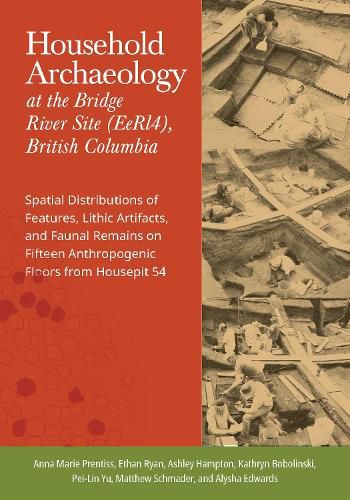Readings Newsletter
Become a Readings Member to make your shopping experience even easier.
Sign in or sign up for free!
You’re not far away from qualifying for FREE standard shipping within Australia
You’ve qualified for FREE standard shipping within Australia
The cart is loading…






Household Archaeology at Bridge River offers a unique contribution to the study of household archaeology, providing unprecedented insights into the history of a long-lived house in the Interior Pacific Northwest. With fifteen intact anthropogenic floors dating to pre-Colonial times, Bridge River’s Housepit 54 provides an extraordinary archaeological record-the first to allow researchers to adequately test for relationships between occupational variation and social change.
The authors take a methodological approach that integrates the study of household spatial organization with consideration of archaeological formation processes. Repeating the same set of analyses for each floor, they examine stability from standpoints of occupation and abandonment cycles, structure and organization of activity areas, and variation in positioning of wealth-related items. This volume is an outstanding example of research undertaken through a collaborative partnership between scholars from the University of Montana and the community of the St'At'imc Nation.
$9.00 standard shipping within Australia
FREE standard shipping within Australia for orders over $100.00
Express & International shipping calculated at checkout
Household Archaeology at Bridge River offers a unique contribution to the study of household archaeology, providing unprecedented insights into the history of a long-lived house in the Interior Pacific Northwest. With fifteen intact anthropogenic floors dating to pre-Colonial times, Bridge River’s Housepit 54 provides an extraordinary archaeological record-the first to allow researchers to adequately test for relationships between occupational variation and social change.
The authors take a methodological approach that integrates the study of household spatial organization with consideration of archaeological formation processes. Repeating the same set of analyses for each floor, they examine stability from standpoints of occupation and abandonment cycles, structure and organization of activity areas, and variation in positioning of wealth-related items. This volume is an outstanding example of research undertaken through a collaborative partnership between scholars from the University of Montana and the community of the St'At'imc Nation.